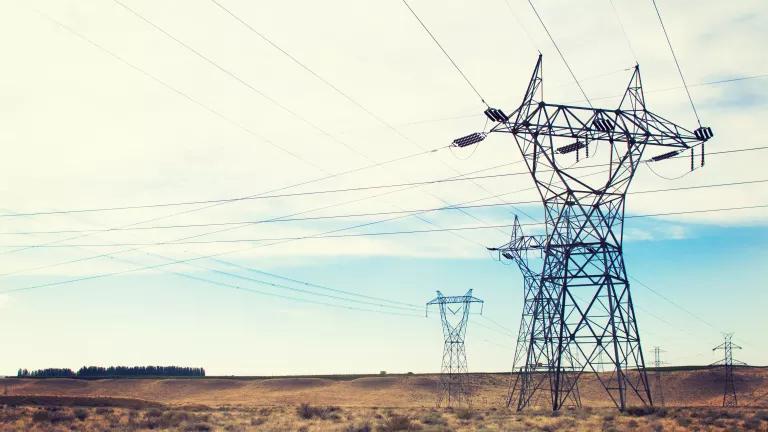To Green the Grid, Take a Lesson from the Auto Industry

"Energy Storage System" by Portland General Electric under a CC BY-ND 2.0 license
Consider for a moment why hybrid cars are so efficient: most of the time, when you’re cruising, the engine charges the battery. When you do need peak power, the battery and engine work together to move the car. This lets the car get away with a smaller engine, and lets the engine run at a more efficient speed most of the time.
Scale this idea up, and it works for the power grid: add batteries to handle demands for peak power, and we can build fewer fossil fuel plants, or even get rid of some of the old dirty ones. As a bonus, the batteries let existing power plants run at more steady, efficient levels, since the batteries are very good at handling the ebb and surge of power demand. As an even bigger bonus, batteries make it much easier to manage greater amounts of wind and solar power.
With the right policies in place, our electric grid could function like this. Energy storage is falling in price at a rapid clip and is becoming competitive with traditional generation in ever more applications. But, to get more storage on the grid, we need to get the policies right. A new study out today demonstrates just how effective batteries are at maintaining reliability and shines a light on the policy barriers to realizing this.
According to the study, by Astrape Consulting on behalf of NRDC and the Energy Storage Association, batteries that can operate for as little as two hours can replace power plants while maintaining the reliability of the grid.
Much of the generation on the grid is held in reserve for rare, short duration ‘peaks’ when demand for power surges. Because electricity use follows temperature, that’s usually the hottest few hours on summer days. There’s a category of generation, called peaker plants, which are used just during those few hours. The study shows that batteries that can run for just 2 hours can replace 2,000MW of those peaker plants—roughly a half-dozen typical gas-fired plants—in the PJM region alone. Just like a hybrid can beat a car with a bigger, heavier engine off the line, a grid with batteries can deliver power when its needed at lower cost.
Other studies have reached similar conclusions, and many parts of the country are deploying storage as replacement for fossil-fuel power plants. So, why is this news?
Sadly, because grid operator PJM is falling behind the rest of the country in adopting storage. PJM has some old rules that say power plants must keep 10 hours of fuel on site. In a bit of a leap, PJM has argued that that means batteries must be able to run at full output for 10 hours in order to replace a generator. It’s as if the oil industry made a rule that electric cars weren’t allowed on the road until they have the same range on batteries as gas powered cars.
The study modeled PJM’s power grid in detail and simulated how it would perform with and without batteries over hundreds of different scenarios. What it found is that the first increment of storage—the 2,000MW mentioned above—can replace power plants during short peak periods. There are diminishing returns: as you add more storage, it needs to run for longer than just the peak periods, so the demands on batteries increase as you get more of them. Batteries that can run for four hours, for example, can replace 4,000MW to 8,000MW of generation.

For comparison, there’s currently 336MW of batteries either in service or under construction in PJM (source). Virtually all of those are designed for short term storage and can run for 15 to 30 minutes. PJM’s current batteries could provide maybe 80MW for 2 hours—in other words, a two-hour duration requirement gives room for PJM’s battery fleet to grow to 25 times what it is today. A four-hour duration requirement would let it grow 50 or 100 times.
The argument that all batteries be required to run for 10 hours before they can replace generation simply doesn’t hold up. Disappointingly, this seems like a repeat of the pattern from the last few years of capacity markets being used as barriers to new technologies, rather than ways to find the least-cost solutions for consumers’ needs. The electric grid of the not-too-distant future will rely on a diverse mix of complementary, low-carbon technologies. We can only hope that PJM can evolve its capacity market to keep up.



